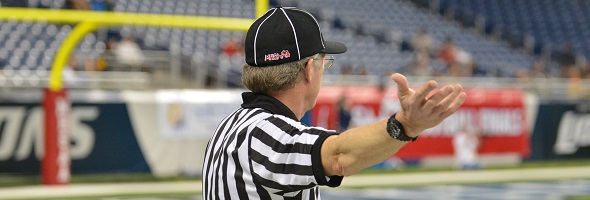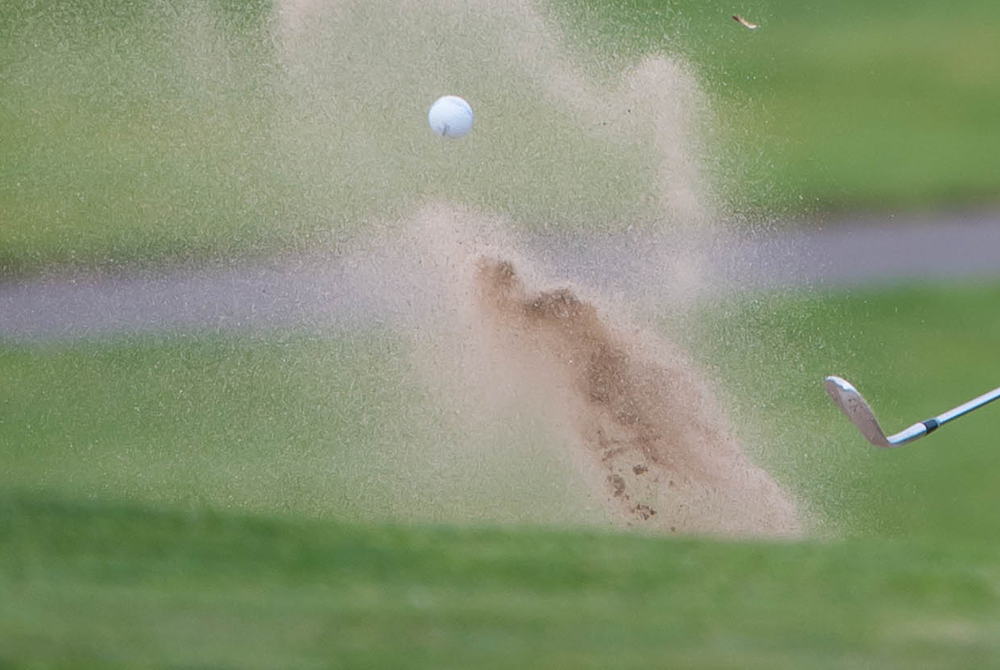
Be the Referee: 7-Person Football Crews
November 12, 2015
This week, MHSAA assistant director Mark Uyl discusses why seven-person football crews are used for MHSAA Semifinals and Finals.
Be The Referee is a series of short messages designed to help educate people on the rules of different sports, to help them better understand the art of officiating, and to recruit officials.
Below is this week's segment - 7-Person Football Mechanics - Listen
Last fall, the MHSAA used seven-person football officiating crews at the Semifinal and Final levels of our tournament for the very first time. These larger crews replaced the traditional five-person crews in the 24 most important games of the football season.
Seven-person crews, which for many years were the size of NCAA and NFL crews, provide for much better coverage in the passing and running games with all of the spread offenses and wide-open attacks that have become commonplace with football in the year 2015 and beyond. By adding the two extra officials on each deep sideline, coaches have now two officials to communicate with on each sideline to answer questions and address concerns.
Past editions:
Nov. 5: Make the Call: Personal Fouls - Listen
Oct. 29: Officials Demographics - Listen
Oct. 15: Make the Call: Intentional Grounding - Listen
Oct. 8: Playoff Selection - Listen
Oct. 1: Kick Returns - Listen
Sept. 24: Concussions - Listen
Sept. 17: Automatic First Downs - Listen
Sept. 10: Correcting a Down - Listen
Sept 3: Spearing - Listen
Aug. 27: Missed Field Goal - Listen

Be the Referee: Abnormal Course Condition
By
Paige Winne
MHSAA Marketing & Social Media Coordinator
October 1, 2024
Be The Referee is a series of short messages designed to help educate people on the rules of different sports, to help them better understand the art of officiating, and to recruit officials.
Below is this week's segment – Abnormal Course Condition - Listen
We’re on the golf course today and our approach into 18 has gone from bad to worse. Or has it?
Our shot lands in a puddle, in the middle of a bunker, which certainly isn’t good. But because water in a bunker is an abnormal course condition, we’re allowed free relief.
We’re able to go to the nearest spot of relief, no closer to the hole, and drop within a club’s length of that spot while still playing from the bunker.
Or relief can be taken outside of the bunker, no closer to the hole, and within line of the shot – but a penalty stroke is added.
So you have two options if you find water inside a bunker; only one requires you to take a penalty stroke.
Of course the best course of action is to avoid the bunkers all together!
Previous 2024-25 Editions
Sept. 25: Tennis Nets - Listen
Sept. 18: Libero - Listen
Sept. 10: Cross Country Uniforms - Listen
Sept. 3: Soccer Handling - Listen
Aug. 24: Football Holding - Listen

